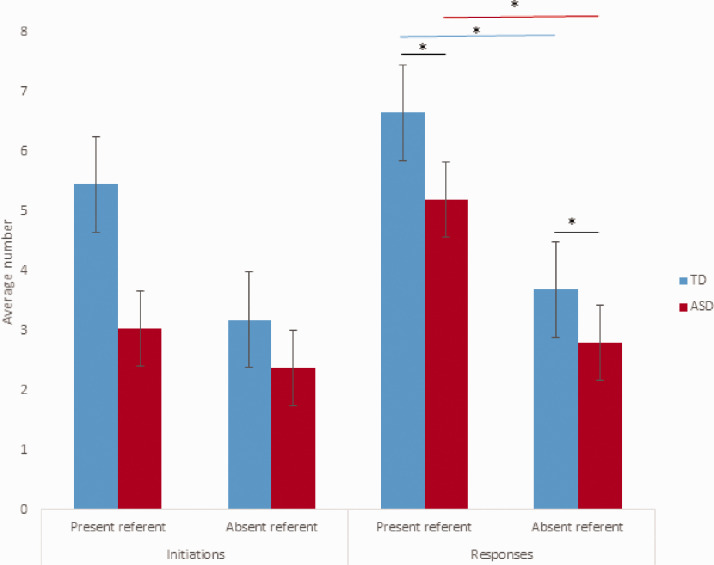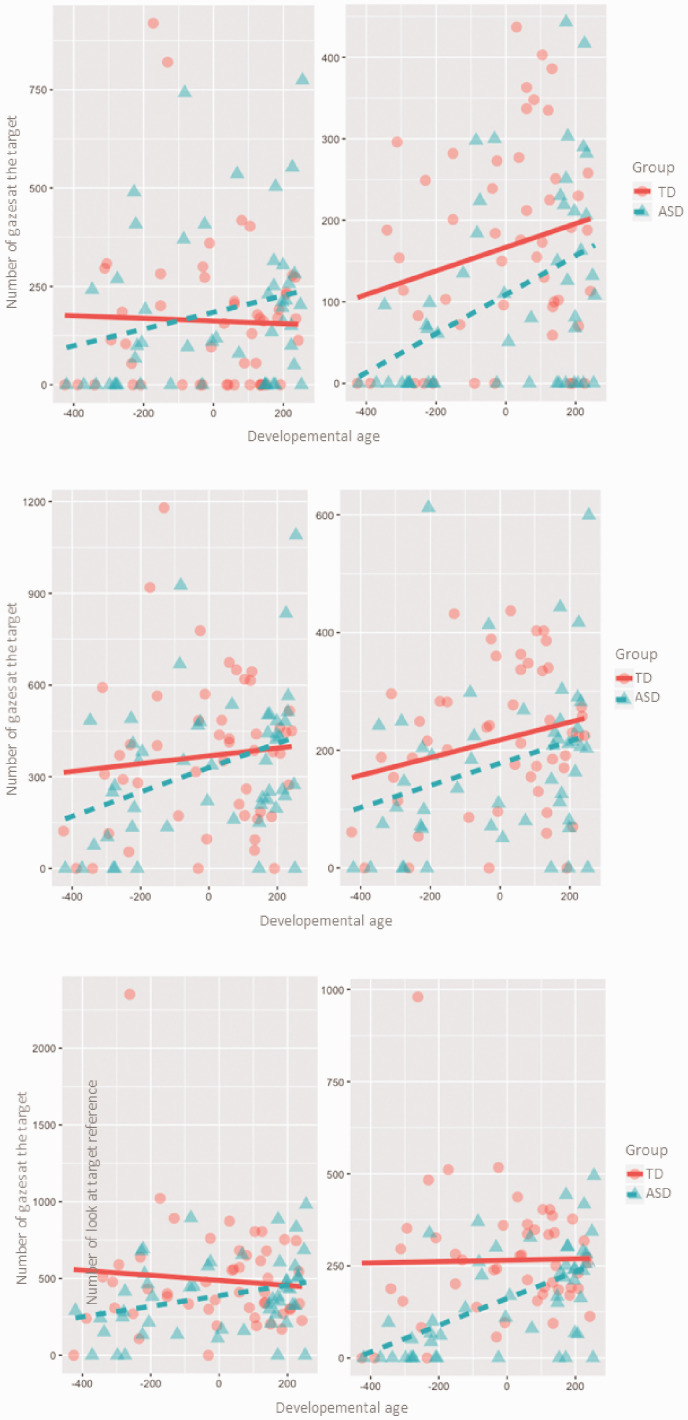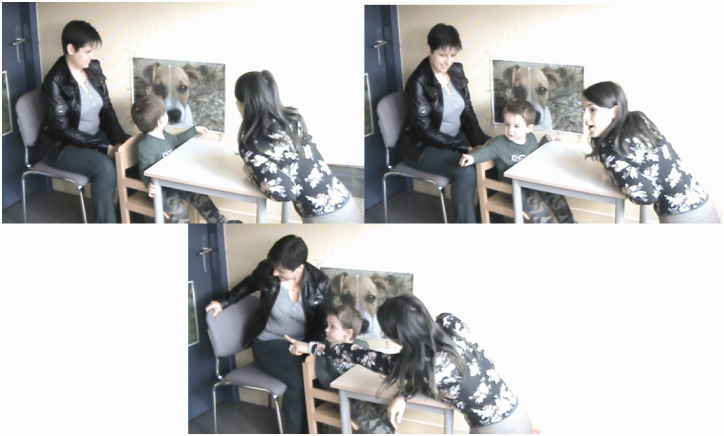Initiation and response of joint attention bids in autism spectrum disorder children depend on the visibility of the target.
IF 3.4
Q1 EDUCATION, SPECIAL
Autism and Developmental Language Impairments
Pub Date : 2020-08-31
eCollection Date: 2020-01-01
DOI:10.1177/2396941520950979
引用次数: 3
Abstract
Background and aims Response to joint attention (RJA) and initiation of joint attention (IJA) are impaired in pre-schoolers with autism spectrum disorder (ASD). Children’s response to joint attention may depend on the presence of the target in the child's field of vision or on the type of deictic index (head and eye orientation, pointing and verbalisations) used by the adult to initiate joint attention. Methods This study deals with 50 ASD children aged from 2 years 8 months to 11 years 7 months, with a communicative level comparable to children under 31 months of age, according to the French version of the Early Social Communication Scales (ECSP, by its French acronym). We compared the aforementioned ASD children with 50 typically developing (TD) children, aged 9 to 30 months who had no communication disorders according to the ECSP. During the ECSP test, we analysed joint attention behaviours on three posters present or absent from the children's visual field. Results We did not observe any difference in the number of IJAs between groups, but ASD children were less responsive than TD children were. Our results showed a developmental progression in the responses of children with ASD if several deictic cues were used by an adult simultaneously (looking and pointing, or looking and verbalising to indicate a target), whether the referent was present or absent from the child’s visual field. In addition, we observed developmental progression when the referent was behind the child and the adult only used their gaze to refer to it. Conclusion Thus, we argue that the type of cues used affects ASD children’s response behaviours during joint attention towards a referent that may be present or absent from their visual field. Implications: Regarding the social and the sensory difficulties of children with ASD, many therapeutic approaches focus their intervention methods on non-verbal communication skills and joint attention. This fundamental research makes it possible to identify the most appropriate type of deictic index for children with ASD with developmental delay, depending on the presence or absence of the referent in the child's visual field.



自闭症谱系障碍儿童共同注意请求的启动和反应依赖于目标的可见性。
背景与目的:学龄前自闭症谱系障碍(ASD)儿童联合注意反应(RJA)和联合注意启动(IJA)功能受损。儿童对共同注意的反应可能取决于目标在儿童视野中的存在,或者取决于成人用来启动共同注意的指示指数(头和眼睛的方向、指向和语言表达)的类型。方法:根据法语版早期社会沟通量表(ECSP),本研究涉及50名2岁8个月至11岁7个月的ASD儿童,其沟通水平与31个月以下的儿童相当。我们将上述ASD儿童与50名9至30个月的正常发育(TD)儿童进行了比较,这些儿童根据ECSP没有沟通障碍。在ECSP测试中,我们分析了儿童视野中存在或不存在的三张海报的共同注意行为。结果:我们没有观察到组间IJAs数量的差异,但ASD儿童的反应低于TD儿童。我们的研究结果显示,如果一个成年人同时使用几个指示性线索(看和指,或者看和语言来指示一个目标),无论参考物在孩子的视野中是否存在,ASD儿童的反应都有发展的进展。此外,我们还观察到当指涉物在儿童身后,而成人只使用他们的目光来指涉该指涉物时的发展进程。结论:因此,我们认为所使用的线索类型影响ASD儿童在对其视野中可能存在或不存在的参考物进行联合注意时的反应行为。启示:对于自闭症儿童的社交和感觉困难,许多治疗方法将其干预方法集中在非语言沟通技能和共同注意上。这项基础研究可以根据儿童视野中所指物的存在与否,为患有发育迟缓的ASD儿童确定最合适的指示指数类型。
本文章由计算机程序翻译,如有差异,请以英文原文为准。
求助全文
约1分钟内获得全文
求助全文
来源期刊

Autism and Developmental Language Impairments
Psychology-Clinical Psychology
CiteScore
3.20
自引率
0.00%
发文量
20
审稿时长
12 weeks
 求助内容:
求助内容: 应助结果提醒方式:
应助结果提醒方式:


